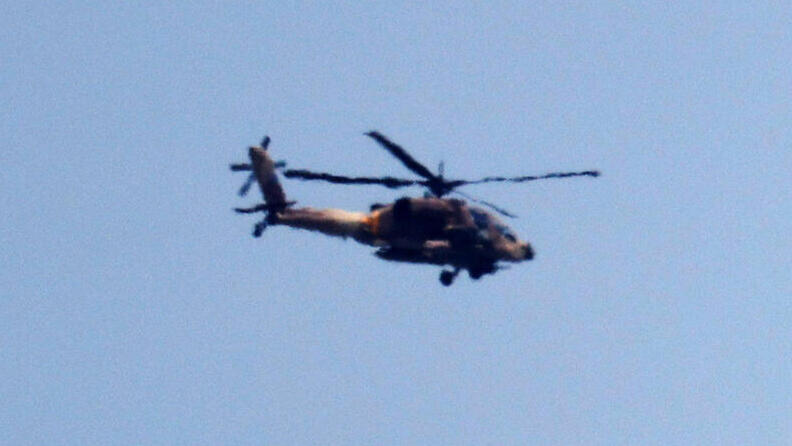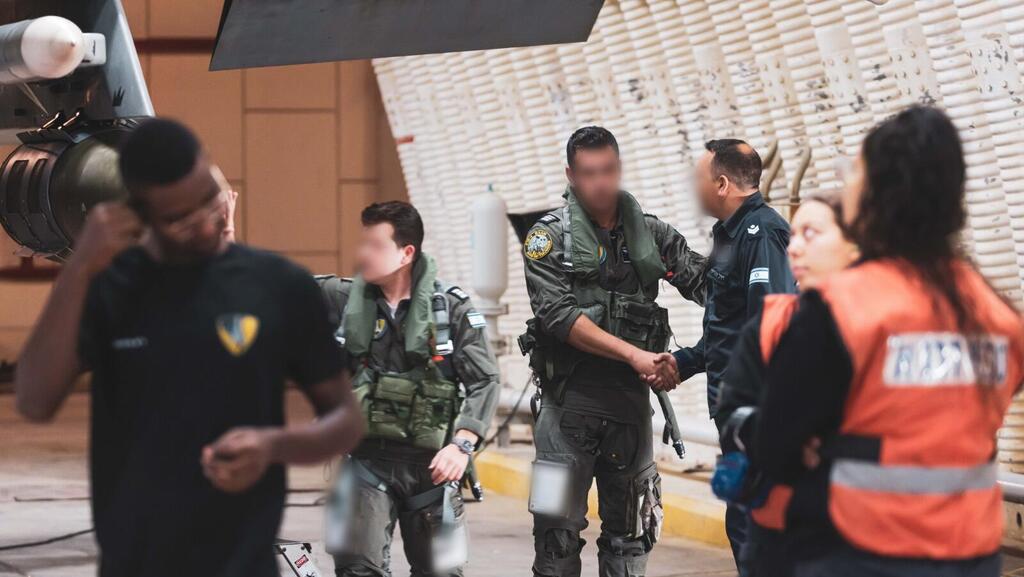Footage of helicopters attacking on the first day of the war with Hamas
(Video: IDF Spokesperson's Unit)
The Israeli Air Force started to piece together the events that triggered the start of the war with Hamas. The fog of war not only hampered the ground forces but also the aerial teams dispatched to the skies over the western Negev in the early hours of that black Saturday.
Read more:
The first pair of attack helicopters, on immediate standby for the Gaza region, arrived in the area from a base in the north, roughly an hour or so after the terror attack began. This was even though the Apache choppers' main squadron was stationed closer to the Gaza Strip, at the Ramon Airbase.
At Ramon personnel sensed quickly that something extraordinary was unfolding. They acted promptly, but a combat helicopter only reached the conflict zone at 8:32 AM.
As the pilots struggled to differentiate between terrorists and civilians, the decision was made to prioritize the immediate halt of the influx of Hamas terrorists and the potentially dangerous Gaza mobs breaching the border. Throughout the day of intense combat, 28 combat helicopters reloaded their entire arsenal, including hundreds of 30mm artillery shells and Hellfire missiles. The initial pace of the strikes against the thousands of infiltrators was staggering, with the pilots eventually slowing down their attacks and meticulously selecting targets.
Hamas terrorists deliberately played a cunning game with the helicopter pilots and special forces operatives. briefings revealed that the terrorists were advised to advance cautiously into the settlements and military outposts, to walk and not run, in order to appear like they were Israeli. This deception tactic persisted for some time until the Apache pilots realized that all constraints should be disregarded. It was only around 9:00 AM that some of them independently decided to use artillery shells against the terrorists without seeking approval from higher authorities.
The initial air operations on the first day lacked precise organization. However, the helicopter pilots found solutions in the challenging and chaotic skies. A significant portion of fire coordination and the identification of targets came to the pilots from the ground forces in phone calls or WhatsApp images. Given the overwhelming number of casualties and captives, the Israeli Air Force recognized that without the artillery support and multiple helicopter strikes carried out by the IDF, the casualty toll would have been much higher.
Another critical development that aided IAF commanders in grasping the gravity of the situation occurred around 10:00 AM. The commander of the 190th Squadron, Lt. Col. A., descended from his helicopter at the Ramon Airbase to refuel and reequip. He immediately extracted the complete footage recorded by the chopper's camera and swiftly transmitted it to the IAF headquarters. In less than 20 seconds, he was back in the air. Utilizing the information he had compiled, he directed other aerial units to engage targets in the Gaza border area. At one point, he even fired on an overrun IDF position to assist naval commandos in a rescue operation.
Currently, the aerial effort is concentrated in Gaza, but the Air Force is prepared for involvement in battles in the north. The IDF emphasizes that the IAF is highly trained and equipped to handle two theaters of operation simultaneously, but the preference is to focus on one primary theater.
At the same time, the IDF has been closely monitoring Iran's significant efforts to supply advanced weaponry to Hezbollah in Lebanon. According to foreign reports, the IAF was responsible for recent airstrikes on Syrian airports in Haleb and Damascus, effectively rendering them inoperative. This also disrupted large weapons convoys en route to Lebanon.






